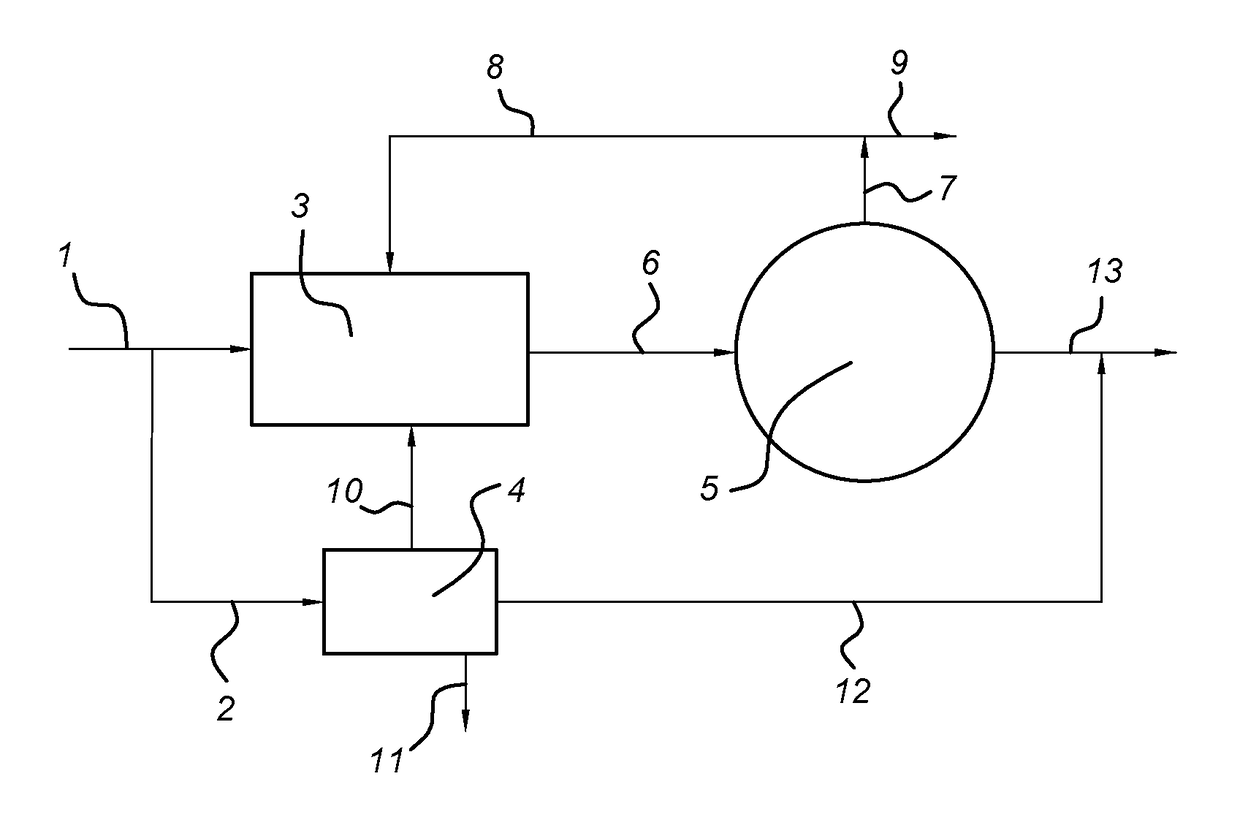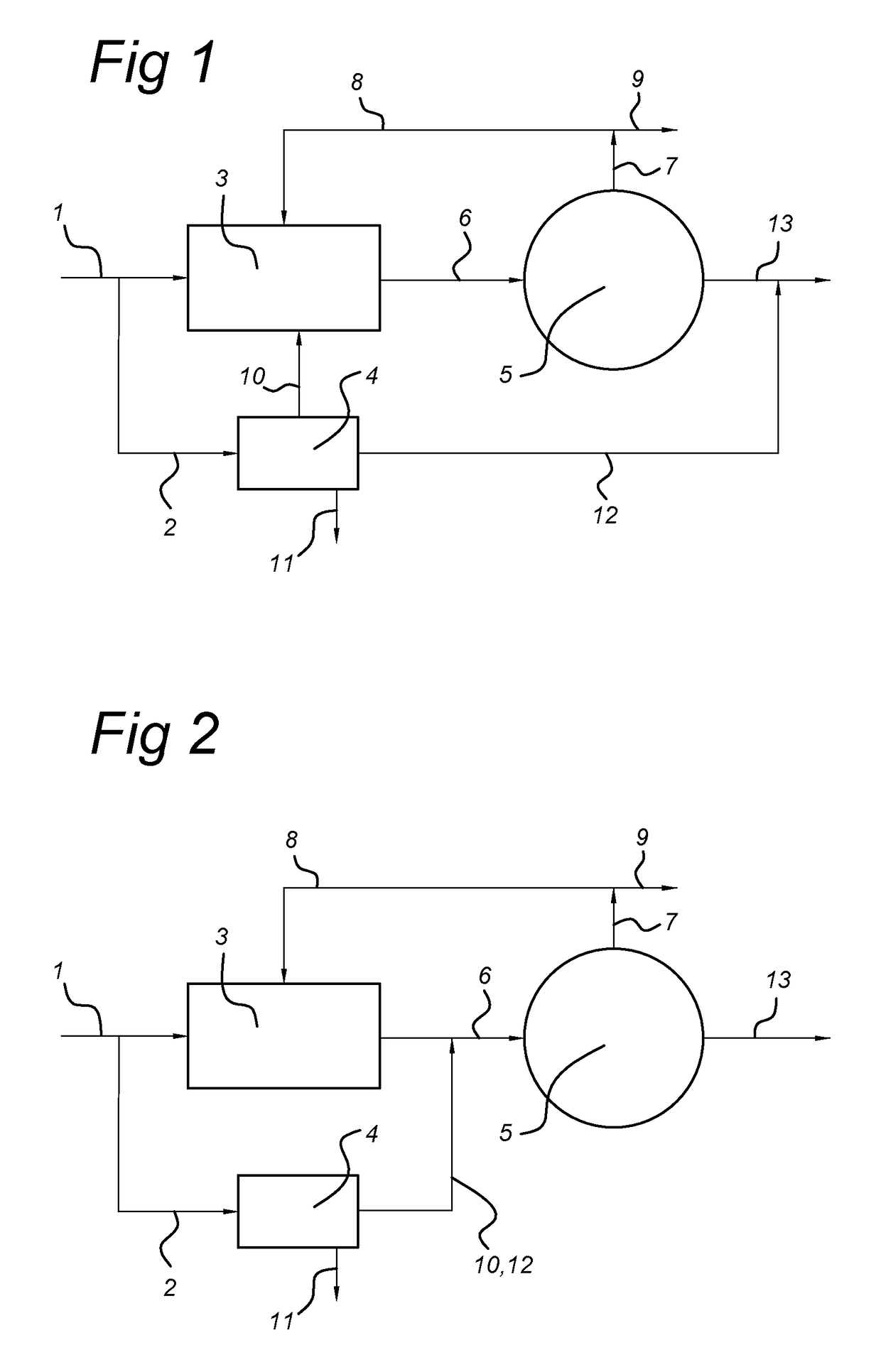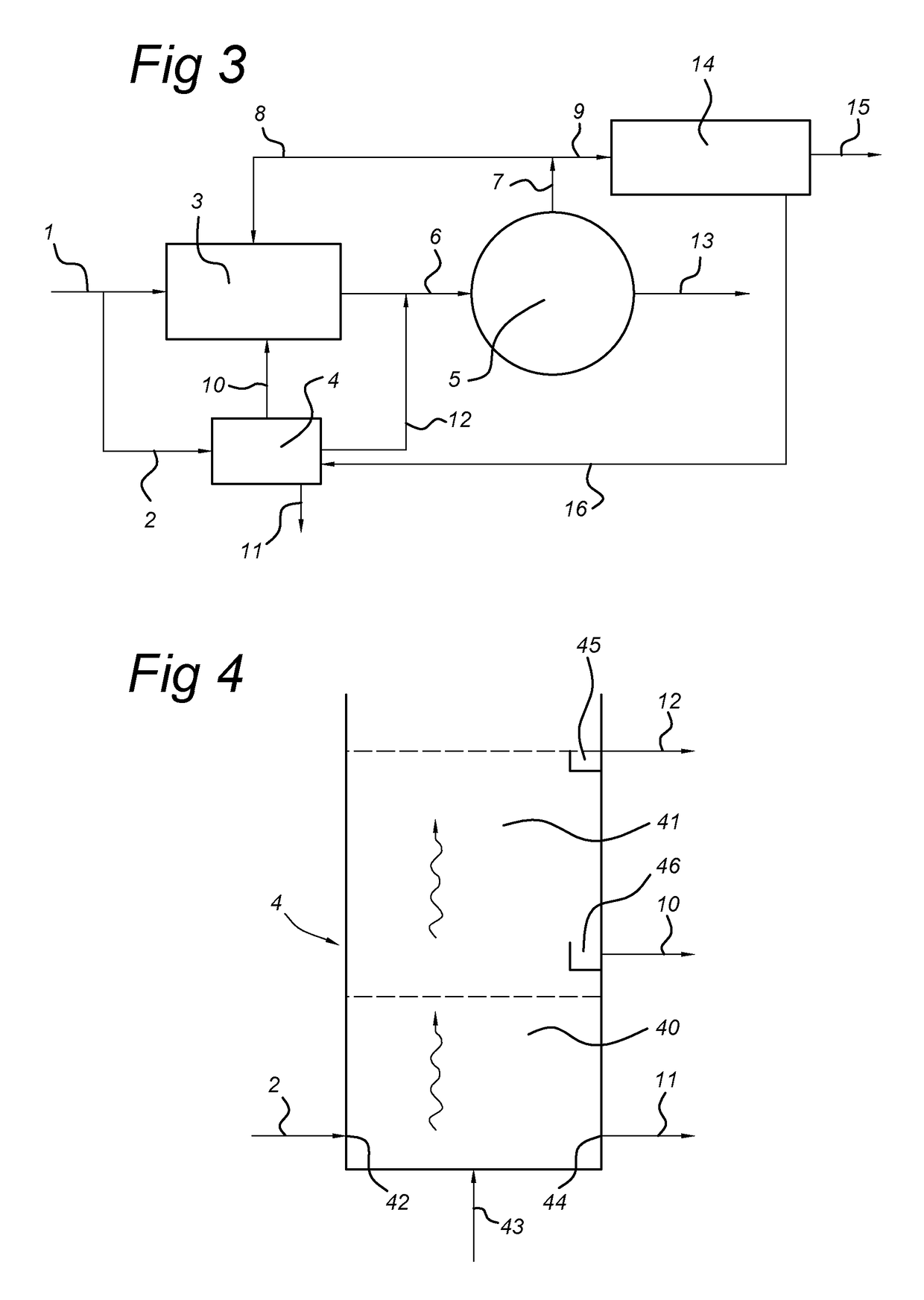Hybrid wastewater treatment
a wastewater treatment and hybrid technology, applied in biological water/sewage treatment, multi-stage water/sewage treatment, sustainable biological treatment, etc., can solve the problems of poor settling sludge characteristics, limited mlss concentration, and tendency to develop floating sludge, so as to improve the performance and flexibility of state-of-the-art wastewater treatment plants, improve the performance of cas systems, and contribute to the overall treatment performance
- Summary
- Abstract
- Description
- Claims
- Application Information
AI Technical Summary
Benefits of technology
Problems solved by technology
Method used
Image
Examples
Embodiment Construction
[0022]The invention thus provides a wastewater treatment process comprising subjecting a part of a wastewater supply to an activated sludge process using floc-like aerobic biomass, and feeding part of the wastewater to a granular biomass process using aerobic granular biomass, wherein part of the biomass, i.e. the waste biomass and suspended solids, issuing from the granular biomass process is fed to the activated sludge process.
[0023]The activated sludge process (CAS system) and the granular biomass process (AGB reactors) are run in parallel, meaning that the main wastewater stream is split into a stream subjected to the CAS system and a stream subjected to the AGB reactor(s), and the split streams are not substantially intermixed during the treatment process, other than in low amounts accompanying biomass transfer from the AGB system to the CAS system. The parallel setup is described in more detail here below. The part of the biomass from the granular biomass process that is fed t...
PUM
| Property | Measurement | Unit |
|---|---|---|
| particle size | aaaaa | aaaaa |
| residence time | aaaaa | aaaaa |
| settling velocity | aaaaa | aaaaa |
Abstract
Description
Claims
Application Information
 Login to View More
Login to View More - R&D
- Intellectual Property
- Life Sciences
- Materials
- Tech Scout
- Unparalleled Data Quality
- Higher Quality Content
- 60% Fewer Hallucinations
Browse by: Latest US Patents, China's latest patents, Technical Efficacy Thesaurus, Application Domain, Technology Topic, Popular Technical Reports.
© 2025 PatSnap. All rights reserved.Legal|Privacy policy|Modern Slavery Act Transparency Statement|Sitemap|About US| Contact US: help@patsnap.com



